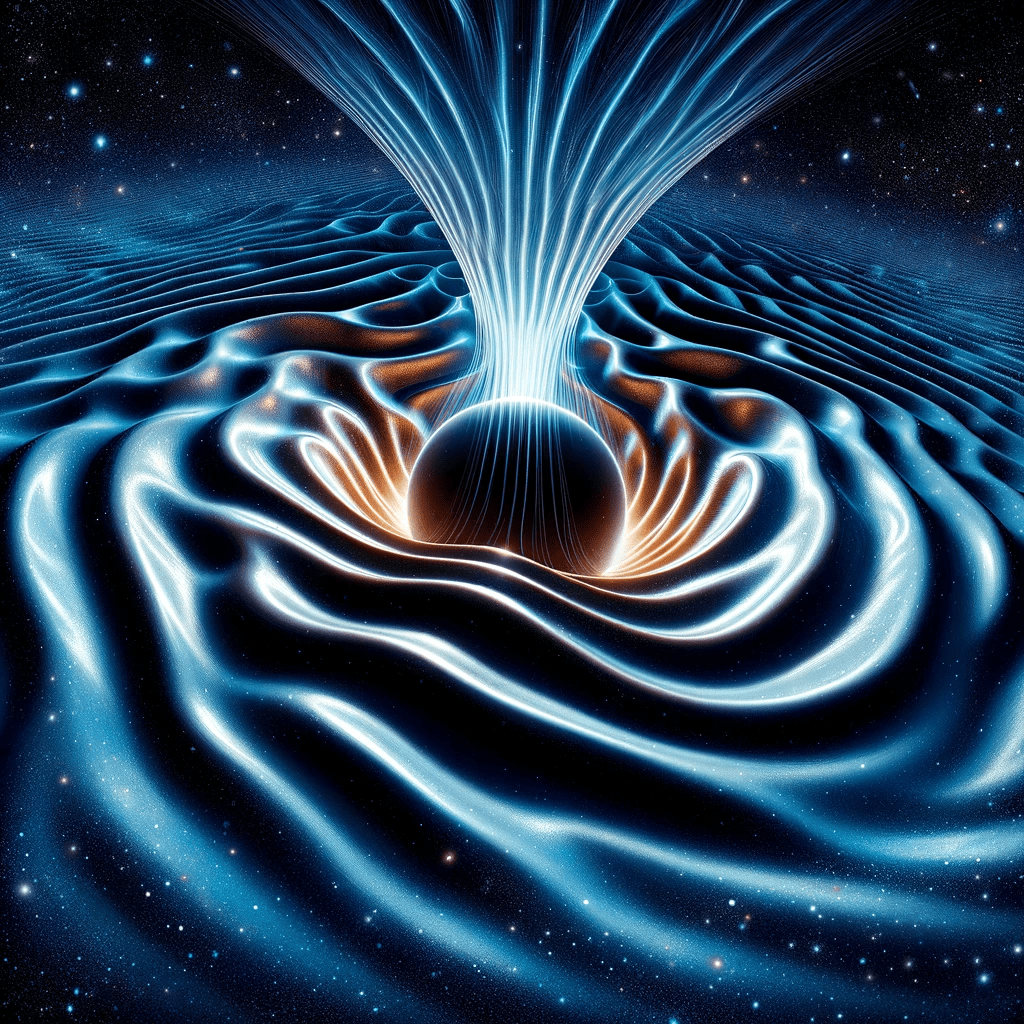Gravitational Waves

Gravitational waves are ripples in the fabric of spacetime that are produced by the movement of massive objects, such as black holes or neutron stars. They were first predicted by Albert Einstein’s theory of general relativity in 1916, but it wasn’t until over 100 years later that they were directly detected by scientists. The detection of gravitational waves is a major milestone in the field of astrophysics and has opened up new avenues for studying the universe.
The concept of gravitational waves was first predicted by Albert Einstein in 1916. The first direct detection of gravitational waves was made by the Laser Interferometer Gravitational-Wave Observatory (LIGO) collaboration in 2015, which was awarded the Nobel Prize in Physics in 2017 for their discovery.
Gravitational waves are ripples in the fabric of spacetime that are produced by the movement of massive objects. When two massive objects, such as black holes or neutron stars, orbit around each other, they create gravitational waves that propagate outward at the speed of light. These waves can be detected by sensitive instruments on Earth, which can measure the tiny distortions they cause in spacetime.
Gravitational waves were first predicted by Albert Einstein in 1916, but it wasn’t until 2015 that they were directly detected by the LIGO collaboration. Gravitational waves can be produced by any massive object in the universe, but they are most commonly detected from the mergers of black holes or neutron stars. The first direct detection of gravitational waves was made by the LIGO detectors in the United States.
The detection of gravitational waves is important for several reasons. First, it confirms a major prediction of Einstein’s theory of general relativity and provides a new way of studying the nature of gravity. Second, it opens up a new window for observing the universe, allowing scientists to study the behavior of massive objects in extreme environments, such as the centers of galaxies or the aftermath of supernova explosions.
Gravitational waves were detected for the first time in 2015 by the LIGO collaboration, which operates two detectors in the United States. The discovery was announced in 2016 and confirmed a major prediction of Einstein’s theory of general relativity. (Source: National Science Foundation)
Gravitational waves travel at the speed of light and can be detected by measuring tiny changes in the distance between two objects caused by the passing of a wave. The LIGO detectors use lasers to measure the distance between mirrors located 4 kilometers apart, and can detect changes as small as a thousandth of the diameter of a proton. (Source: Physics World)
The detection of gravitational waves has opened up a new era of astronomy, allowing scientists to study the universe in ways that were not possible before. By observing the behavior of massive objects in extreme environments, such as black hole mergers or neutron star collisions, scientists can learn more about the nature of gravity, the properties of matter, and the history of the universe. (Source: NASA)
Experts in the field of astrophysics and physics have praised the discovery of gravitational waves as a major breakthrough in our understanding of the universe. Many believe that the detection of gravitational waves will lead to new discoveries and insights in the years to come. Some, like astrophysicist Neil deGrasse Tyson, have called it a “new era in astronomy.”
Books on the topic of gravitational waves include “Black Hole Blues and Other Songs from Outer Space” by Janna Levin and “Gravity’s Kiss: The Detection of Gravitational Waves” by Harry Collins. These books explore the scientific basis of gravitational waves and their significance for our understanding of the universe.
A New York Times article from 2019 discussed the discovery of gravitational waves from a collision between a neutron star and a black hole, highlighting the potential insights into the behavior of matter and gravity that could be gained from such events.


